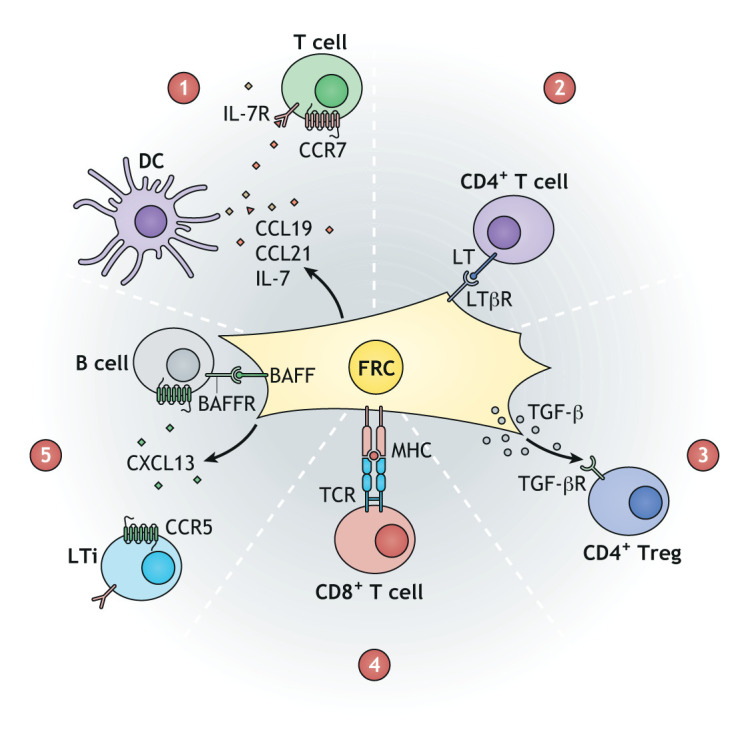Fig. 1.

Fibroblastic reticular cells (FRCs) are central in maintaining the lymph node niche. (1) Lymph node FRCs produce the chemokines CCL19 and CCL21 to recruit dendritic cells (DCs) and T cells that express CCR7. Secretion of IL-7 by FRCs drives the survival of T cells within the lymph node microenvironment. (2) CD4+ T cells express lymphotoxin (LT), which interacts with the LTβ receptor (LTβR) on FRCs and thus provides the survival factor for FRCs. (3,4) FRCs have immunoregulatory roles: they can activate regulatory T cells (Tregs) through the secretion of TGF-β (3) or induce peripheral tolerance of CD8+ T cells through the interaction between major histocompatibility complex (MHC) and T-cell receptor (TCR) (4). (5) FRCs can produce CXCL13, which can recruit lymphoid tissue inducers (LTi) and B cells. B-cell survival is also driven by the interaction between the surface B-cell activating factor (BAFF) on FRCs and the BAFF receptor (BAFFR) on B cells. TGF-βR, TGF-β receptor.
